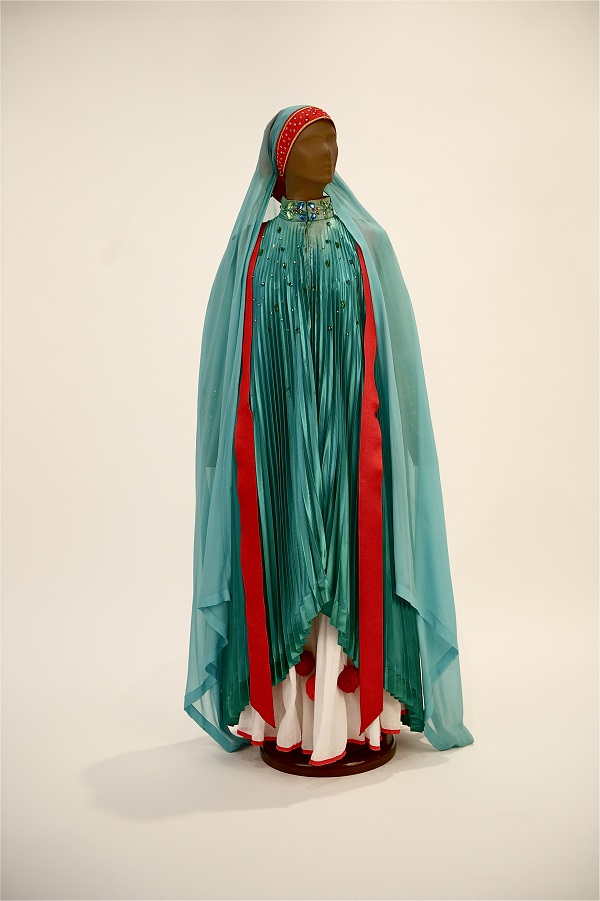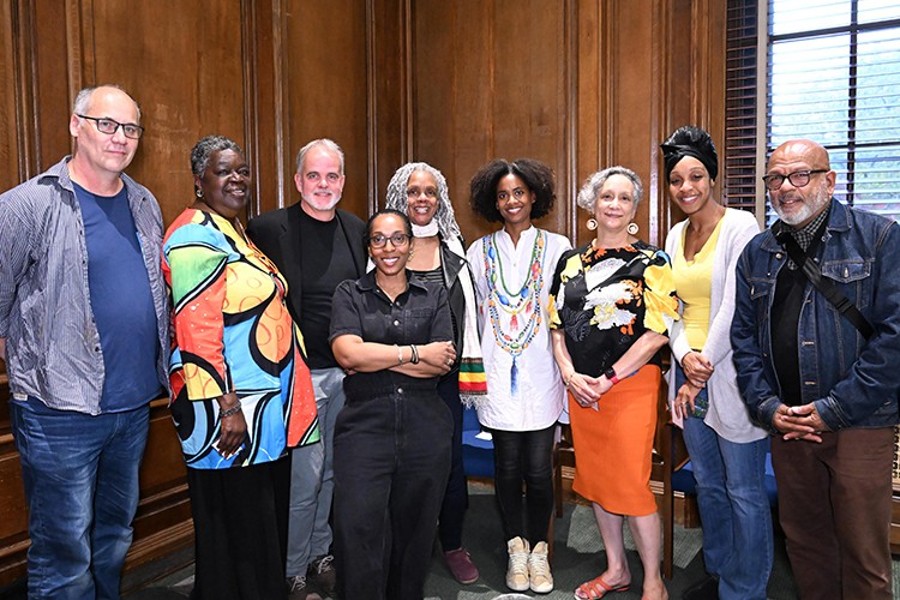 The founding of the Dance Theatre of Harlem in 1969 by Arthur Mitchell and Karel Shook occurred in the aftermath of Martin Luther King, Jr.’s 1968 assassination. There was the body of a civil rights leader shot down and rising from that tragedy would be the bodies of young and motivated African-American dancers ready to lead the charge of challenging racism head-on in the world of dance. The exhibition, Dance Theatre of Harlem: 40 Years of Firsts, on view at the Reginald F. Lewis Museum in Baltimore, Maryland presents this groundbreaking dance company’s story.
The founding of the Dance Theatre of Harlem in 1969 by Arthur Mitchell and Karel Shook occurred in the aftermath of Martin Luther King, Jr.’s 1968 assassination. There was the body of a civil rights leader shot down and rising from that tragedy would be the bodies of young and motivated African-American dancers ready to lead the charge of challenging racism head-on in the world of dance. The exhibition, Dance Theatre of Harlem: 40 Years of Firsts, on view at the Reginald F. Lewis Museum in Baltimore, Maryland presents this groundbreaking dance company’s story.
“This is a culture interested in bodily expression and when Arthur Mitchell began there were foolish stereotypes that blacks couldn’t do classical dancing with our bodies. It was about shattering that barrier,” said the museum’s executive director, A. Skipp Sanders. “That type of perseverance is happening now too as we look at what’s going on in today’s movements with our younger generation. Every chance to point that out is a chance to tell truth to power.”
The exhibition presents this journey through costumes, archival photos and tour programs, design bibles and interactive elements including an installation where youth can compare the athleticism in the jump of a football player to that of a dancer. And while the exhibition offers a chance to see the strides made since Mitchell was the only African-American dancer of a major ballet company (New York City Ballet) in 1955—for Dance Theatre of Harlem ballet master, Keith Saunders it’s also a stark reminder of what more is left to achieve. To understand how Saunders feels it is worth considering the fact that celebrated dancer, Misty Copeland is only the third black female soloist at the American Ballet Theatre in its 75-year history.
“Through the existence of Dance Theatre of Harlem there has undoubtedly been progress in the field,” said Saunders, a Baltimore native. “But we are having the same conversations today that occurred since the 1970s. The question is still being asked, where are the black ballet dancers? It highlights how far we still have yet to come.”
The hidden emotional (T)ERROR of U.S. government counterterrorism policies
On paper, the plot of “(T)ERROR” reads like a Hollywood thriller. Follow an FBI informant as he goes undercover to help catch a suspected terrorist. But this is not fiction. In the documentary by Lyric R. Cabral and David Felix Sutcliffe, which is currently screening during the Tribeca Film Festival, they received unprecedented access to a real FBI sting operation. The film follows Saeed “Shariff” Torres, a Harlem-raised, 63-year-old former black revolutionary, as he tries to build a dubious case against, Khalifah al-Akili, a white Muslim convert and public Taliban sympathizer. But during the investigation, al-Akili becomes aware that he is being monitored and the documentary begins to simultaneously follow his experience. In the process, Cabral and Sutcliffe capture the emotional toll at the intersection of race, class, and the government’s counterterrorism methods.
“We are attracted to strong characters,” said Cabral. “We had access to Saeed but wanted to follow the case wherever it went and wanted as many voices as we could find to chart Saeed’s impact. These are perspectives that are critical to the terrorism debate because it addresses the impact on communities.”
A 2014 Human Rights Watch report found that counterterrorism sting operations were “abusive” to communities. The film depicts this through al-Akili being arrested for weapons violation over a picture he posted on Facebook of himself at a gun range. His wife and daughter are then kicked out of public housing and forced to find shelter in London. Presently, al-Akili remains in jail. Saeed, who once made thousands being an informant, finds himself struggling financially and in a state of depression as he tries to build a case. Although he is a willing participant in the sting he is also victimized by the system as it begins to weigh heavily on his mental health and financial stability.
For Cabral addressing these issues will involve thorough systemic change. “I think the FBI is using informants and undercover agents to act as provocateurs. If the FBI were to use trained undercover agents a lot of that responsibility of informants acting as agent provocateurs would diminish.”
The filmmakers are working on an outreach project to address the grassroots issues within Muslim communities as they aim to combat aggressive counterterrorism efforts. According to Sutcliffe, the project is in its early stages with screenings and town hall discussions. “Hopefully the film can raise awareness as we reexamine the direction we want our government to take after 9/11.”
 The weekly column, On the “A” w/Souleo, covers the intersection of the arts, culture entertainment and philanthropy in Harlem and beyond and is written by Souleo, founder and president of event/media content production company, Souleo Enterprises, LLC.
The weekly column, On the “A” w/Souleo, covers the intersection of the arts, culture entertainment and philanthropy in Harlem and beyond and is written by Souleo, founder and president of event/media content production company, Souleo Enterprises, LLC.
Become a Harlem Insider!
By submitting this form, you are consenting to receive marketing emails from: Harlem World Magazine, 2521 1/2 west 42nd street, Los Angeles, CA, 90008, https://www.harlemworldmagazine.com. You can revoke your consent to receive emails at any time by using the SafeUnsubscribe® link, found at the bottom of every email. Emails are serviced by Constant Contact









